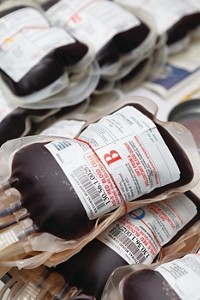Advertisement
Grab your lab coat. Let's get started
Welcome!
Welcome!
Create an account below to get 6 C&EN articles per month, receive newsletters and more - all free.
It seems this is your first time logging in online. Please enter the following information to continue.
As an ACS member you automatically get access to this site. All we need is few more details to create your reading experience.
Not you? Sign in with a different account.
Not you? Sign in with a different account.
ERROR 1
ERROR 1
ERROR 2
ERROR 2
ERROR 2
ERROR 2
ERROR 2
Password and Confirm password must match.
If you have an ACS member number, please enter it here so we can link this account to your membership. (optional)
ERROR 2
ACS values your privacy. By submitting your information, you are gaining access to C&EN and subscribing to our weekly newsletter. We use the information you provide to make your reading experience better, and we will never sell your data to third party members.
Biochemistry
Enzyme pair converts type A blood to type O
Enzymes could increase supplies of universal blood
by Celia Henry Arnaud
June 12, 2019
| A version of this story appeared in
Volume 97, Issue 24
A pair of enzymes from the human gut microbiome can convert type A red blood cells to type O red blood cells. These enzymes might, with further development, help make universal blood that could be transfused into any patient, even if their blood type is unknown.
Type A red blood cells have carbohydrates with an N-acetyl galactosamine (GalNAc) at the ends, and people who have other blood types have an immune reaction to this group, so type A blood can’t be used universally. Type O red blood cells lack the GalNAc and the galactose of type B blood, so this kind of blood can be used in any patient. Previously identified enzymes can convert type A blood to type O, but large quantities are required.
Stephen G. Withers and coworkers at the University of British Columbia identified the new, more efficient enzymes by performing metagenomics analyses of bacteria in human feces (Nat. Microbiol. 2019, DOI: 10.1038/s41564-019-0469-7). They transferred DNA from unculturable bacteria to Escherichia coli and screened for microbes that could convert type A to type O.
The best-performing E. coli produced multiple microbiome enzymes. Individually, these enzymes could not make the conversion. By using the enzymes in various combinations, the researchers found a pair that performed the desired reaction with high efficiency. A GalNAc deacetylase converts the carbohydrate’s acetamide group to an amine, forming a galactosamine intermediate. The second enzyme removes the galactosamine, resulting in the O type antigen. Both enzymes are from the gut bacterium Flavonifractor plautii.
The enzymes are efficient and work in whole blood, without additional isolation steps, at physiological pH, says Dana Devine, chief scientist at Canadian Blood Services, who was not involved in the work. “Of course the jury is out until there are some studies performed in patients that show that group O red blood cells prepared with this enzyme cocktail work properly after transfusion and don’t cause any unexpected reactions in recipients,” she cautions.
That’s up next. Withers says his team is in discussions with Canadian Blood Services and other agencies to undertake safety tests.




Join the conversation
Contact the reporter
Submit a Letter to the Editor for publication
Engage with us on Twitter